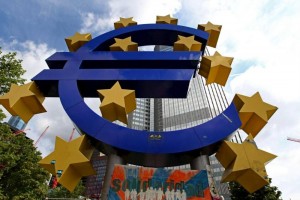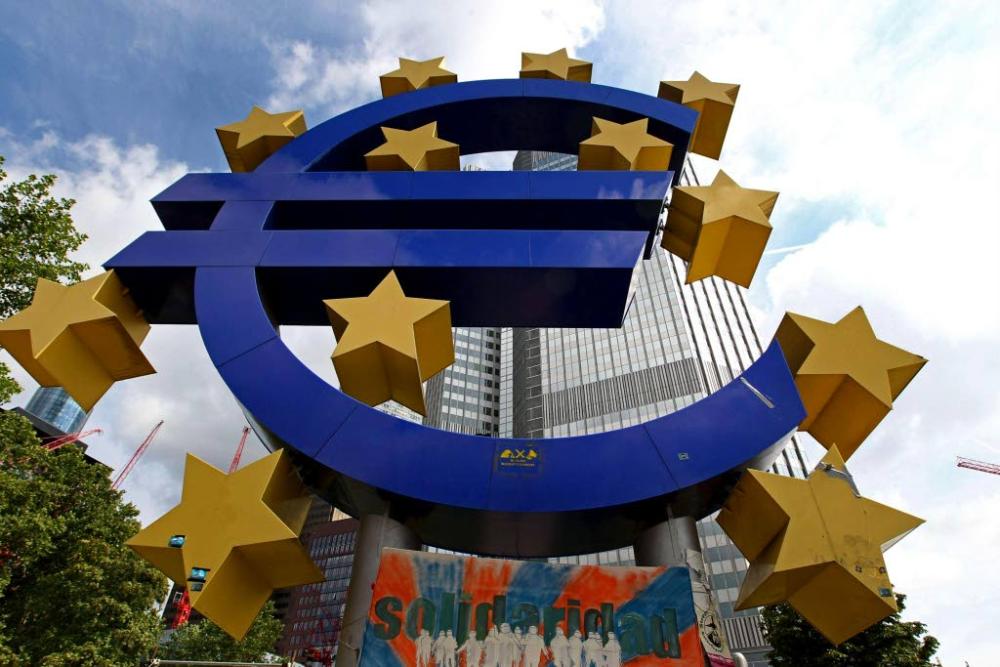
Madrid (AFP) — Spain’s borrowing costs tumbled Tuesday as it tapped the debt market for cash, but analysts warned the lull could be brief as Madrid faces a huge repayment crunch in October.
For now, Spain is enjoying a drop in interest rates sparked by European Central Bank chief Mario Draghi’s promise to preserve the euro and possibly resume purchases of government bonds.
The Treasury raised 4.51 billion euros ($5.6 billion) in a sale of 12- and 18-month bills with demand outstripping supply by more than two to one.
Compared to a similar sale on July 17, the 12-month rate slumped to 3.070 percent from 3.918 percent and the 18-month rate dropped to 3.335 percent from 4.242 percent, Bank of Spain figures showed.
“You could say it is a successful issue,” said Soledad Pellon, analyst at brokerage IG Markets, adding however that short-term debt was relatively easy to place and not entirely representative of the market.
A long-term bond issue due September 6 would be a better test of the appetite for Spanish bonds, she said.
The ECB’s Draghi sparked a market rally on July 26 when he promised that the bank for the 17 nations using the euro was ready to do “whatever it takes” to preserve the euro.
Hopes for dramatic ECB action eased somewhat when Draghi later said only that the bank “may” resume bond purchases. But the possibility of action has still been enough to support the market so far this summer.
The favourable climate on the markets may not last however.
A spokesman for German Finance Minister Wolfgang Schaeuble on Monday squashed a report that the ECB might cap eurozone nations’ bond yields, saying it would be “very problematic”.
Spanish Economy Minister Luis de Guindos is pushing in the opposite direction.
“The minister’s position is that intervention by the ECB on the secondary debt markets should be very strong, without time or quantitative limits,” his spokeswoman told AFP.
This would lead the desired result: dispelling doubts about the future of the euro, she said.
Spain, to which the eurozone has already agreed to provide a 100-billion-euro rescue loan for banks weakened by the property crash, could be forced to seek a full-blown rescue via the ECB this autumn.
Without such aid, doubts over Spain’s finances could emerge in October when it faces short-term debt repayments of 9.02 billion euros and long-term repayments of 24.158 billion euros, Bankinter analysts say.
“There is still a lot to be decided,” said Pellon. “We still don’t know what conditions would be imposed on Spain in case of external intervention,” she added.
“It is very difficult to keep this market calm if in fact there is nothing behind it. At the moment the only thing behind it is the possibility of ECB intervention but if at some point that intervention is denied or finally does not come through, then tensions will return.”
Edward Hugh, a Barcelona-based economist, said Spain was focussed on the cost of sovereign debt, but this was only part of the problem.
Markets were positioning themselves for the possibility that Spanish Prime Minister Mariano Rajoy would ask for a rescue, triggering an ECB bond-buying programme, Hugh said.
“The government could get help with bond purchases but the big issue is putting the economy straight and that is where the focus is increasingly going to be,” he warned.




